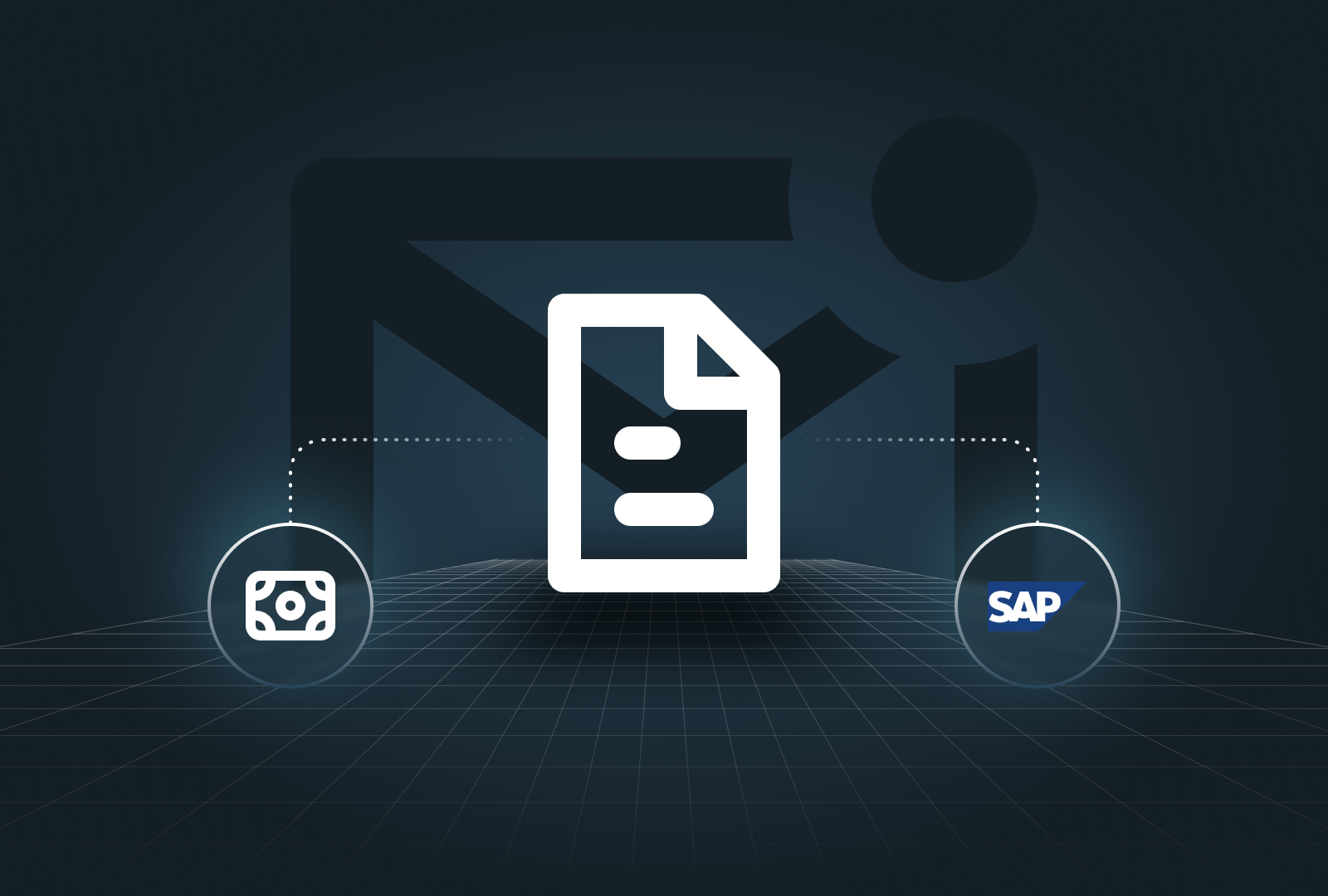In the race toward digital transformation, many enterprise finance teams find themselves in a frustrating paradox: they're tasked with driving innovation and efficiency while being constrained by the very systems meant to enable their success. For organizations that have experienced significant growth over the past decade, this challenge is particularly acute—yesterday's ERP implementation decisions are creating today's operational bottlenecks.
The Hidden Cost of Legacy ERP Rigidity
Enterprise finance teams are increasingly discovering what many transformation leaders have suspected for years: legacy ERPs were fundamentally designed for standardization and governance, not adaptability. While these systems excel at maintaining compliance and providing structure, they often fail to deliver the agility modern finance operations demand.
According to recent studies, approximately 50% of ERP implementations experience operational disruption when going live, and most ERP projects cost three to four times more than initially budgeted while taking 30% longer than anticipated. These statistics highlight the fundamental disconnect between what enterprises need and what various modules within traditional ERPs deliver.
The rigidity manifests in several critical ways:
1. Process Ossification
Legacy ERPs often enforce standardized workflows that may have made sense during implementation but fail to evolve with changing business needs. Finance teams find themselves creating elaborate workarounds just to accomplish basic tasks that weren't anticipated in the original system design.
2. Integration Challenges
As noted by industry analysts, custom code integrations between ERPs and other business systems can create significant technical debt and require constant maintenance. This integration complexity becomes particularly problematic for enterprises that have grown through acquisitions or expanded into new markets.
3. Innovation Barriers
When system modifications require extensive IT resources, budget approvals, and lengthy implementation timelines, the pace of innovation slows dramatically. A recent survey found that 57% of ERP projects take longer than originally planned, creating a perpetual backlog of needed improvements.
4. Data Accessibility Issues
Despite housing critical financial data, many legacy ERPs make accessing and analyzing that information unnecessarily complex. Finance teams often resort to manual exports and spreadsheet manipulations—precisely the inefficiencies ERPs were supposed to eliminate.
The Strategic Dilemma for Transformation Leaders
The challenge for finance transformation leaders is clear: how do you increase operational efficiency, reduce costs, and introduce innovation when your core systems resist change? The answer isn't as simple as "rip and replace"—a strategy that carries enormous risk, cost, and disruption.
The global ERP software market was valued at $48 billion in 2022 and is projected to reach $96 billion by 2032, with the finance segment accounting for approximately 26% of ERP revenue. These numbers reflect the massive investments organizations have made in their ERP infrastructure—investments that can't simply be written off.
Modular Solutions: The Path to Practical Transformation
Rather than attempting to replace entire ERPs, forward-thinking transformation leaders are adopting a more strategic approach: layering modular solutions on top of existing systems to address specific pain points while preserving core ERP functionality.
This approach offers several significant advantages:
1. Targeted Problem-Solving
Modular solutions can be deployed to address specific finance function challenges without disrupting the entire technology ecosystem. For example, implementing specialized treasury management or procurement solutions that integrate with the ERP rather than replacing core modules.
2. Faster Time-to-Value
According to industry data, organizations implementing modular solutions report up to 20% faster deployment times compared to full ERP implementations. This accelerated timeline means transformation initiatives can demonstrate ROI more quickly, building momentum for further innovation.
3. Risk Mitigation
By focusing on specific functional areas rather than enterprise-wide changes, transformation leaders can better manage change, limit disruption, and ensure continued operational stability—critical considerations for finance operations where downtime directly impacts the business.
4. Preservation of Existing Investments
Modular approaches allow organizations to continue leveraging their substantial investments in legacy ERPs while strategically addressing the system's limitations.
Co-Building: The Next Evolution in Finance Transformation
While off-the-shelf modular solutions offer significant advantages over traditional ERP implementations, truly innovative transformation leaders are discovering an even more powerful approach: co-building customized solutions with agile technology partners.
This collaborative development model represents a fundamental shift in how enterprises approach finance technology:
1. Tailored to Specific Pain Points
Co-built solutions are designed specifically for an organization's unique challenges rather than forcing the business to adapt to pre-built software constraints. This targeted approach ensures that the solution directly addresses the most critical operational pain points.
2. Flexibility by Design
Unlike legacy ERPs that were architected for stability over adaptability, co-built solutions can be designed with flexibility as a core principle. This future-proofs the solution against changing business requirements and ensures the finance team won't face the same rigidity challenges in the future.
3. Evolutionary Development
Co-building enables an iterative approach where solutions evolve based on real-world usage and feedback. This stands in stark contrast to traditional ERP implementations where configuration decisions made during initial setup become effectively permanent.
4. Knowledge Transfer
Working closely with development partners during co-building creates internal expertise that empowers the finance team to better understand and control their technology environment, reducing dependency on external consultants for ongoing system management.
Real-World Impact: The Transformation Advantage
Organizations that have embraced the modular, co-building approach are seeing tangible benefits that directly address the limitations of legacy ERPs:
- Accelerated process cycles: Companies implementing modular solutions on top of legacy ERPs report up to a 2X improvement in process cycle times, according to industry benchmarks.
- Enhanced decision-making: By creating purpose-built analytics and reporting layers that extract and transform ERP data, finance teams gain the real-time visibility their legacy systems couldn't provide.
- Reduced operational costs: Targeted automation of high-volume manual processes can yield 30-35% efficiency improvements without the disruption of full system replacement.
- Improved compliance: Modern, flexible solutions can adapt more quickly to changing regulatory requirements, reducing the compliance burden that often accompanies legacy systems.
The Path Forward: Strategic Considerations
For finance transformation leaders evaluating how to break free from ERP constraints while maintaining operational stability, consider these strategic principles:
1. Start With Pain Point Mapping
Before evaluating specific solutions, thoroughly document the most significant operational pain points caused by ERP limitations. This creates a prioritized roadmap for transformation initiatives based on business impact rather than technical considerations.
2. Evaluate Integration Capabilities
When considering modular solutions, prioritize those with robust, well-documented integration capabilities specifically designed for your ERP. The strength of these connections will largely determine the success of your layered approach.
3. Balance Standardization and Customization
While co-built solutions offer tremendous flexibility, maintain a thoughtful balance between customization and standardization. Over-customization can create its own form of technical debt if not carefully managed.
4. Prioritize User Experience
Legacy ERPs are notorious for complex user interfaces that require extensive training. When layering new solutions, prioritize intuitive user experiences that reduce training requirements and increase adoption.
5. Consider Change Management Early
Even the most elegant technical solution will fail without effective change management. Involve end-users early in the process to build buy-in and ensure the solution addresses their actual needs rather than perceived requirements.
Conclusion: Agility Without Compromise
The reality for most enterprise finance teams is that their legacy ERPs aren't going away anytime soon. However, this doesn't mean they must accept the operational limitations these systems impose. Through strategic implementation of modular solutions—particularly those co-built to address specific organizational needs—finance teams can reclaim the agility they need while preserving the stability and compliance benefits of their existing systems.
By embracing this layered approach, transformation leaders can deliver meaningful improvements to finance operations without the risk, cost, and disruption of full ERP replacement. The result is a more responsive, efficient finance function that can truly support the organization's growth ambitions rather than constrain them.
The future of finance transformation isn't about replacing systems—it's about intelligently augmenting them to create the perfect balance of stability and agility that modern enterprises demand.






.png)





.png)



